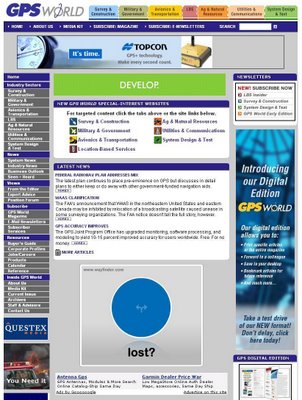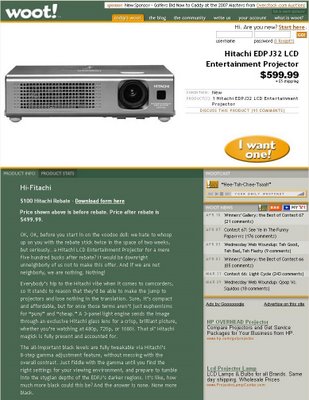
A look inside Google AdSense
Don't have time to read the blog daily? Subscribe to our Inside AdSense email group to receive our posts at your convenience. Also, visit our Help Forum to post your own questions.
Love Google Maps?
Show your visitors where you stand with the Google Maps API. The Maps API allows you to embed geographical information into your site using JavaScript. You can add overlays to your map including markers, polylines, and shadowed information windows. It's a great way to enhance your current site content, and best of all, using the Google Maps API is free.To learn more, and to find out whether your site meets the terms of use, visit the Maps API FAQ.
Referrals are a wiz with new wizard
Since we received positive feedback about the new AdSense for content and AdSense for search code generation wizards, we've created a referrals code wizard to help guide you through the process of implementing referral buttons on your site. Simply choose Referrals from the AdSense Setup page of your account and select the product of your choice.And don't forget, now you can display referral buttons in a text link format as well.
See the bigger picture
There's good news for those of you who are partial to Square (250 x 250) and Large Rectangle (336 x 280) ad formats: Now they support image ads! This means that if you've opted to display image ads, the pool of ads competing to show on your site is about to expand -- and with more ads available, your revenue potential will also grow. Check today to make sure you're opted into image ads.Maintenance Saturday April 22nd at 10 a.m. PST
We'll be performing routine AdSense maintenance on Saturday, April 22nd at 10:00 a.m. PST. During this time, you may not have access to your account. However, please be assured that your Google ads will continue to display and stats and earnings will be recorded as usual.Thanks for your patience!
Search results with the flavor of your site
You can already customize the style of your AdSense for search results. Now, you can customize the substance of them, using the new site-flavored search option available in your AdSense account. The learning technology used in site-flavored search offers a subtle flavoring of your results to match the themes and topics of your site. For example, if you've got a site about music, over time our search results might learn that when your users search for [bass], they mean the instrument - not the fish.Interested in getting site-flavored search for your search results? Just visit the AdSense Setup tab, choose AdSense for search as the product, and generate your search code as normal, making sure to select the Flavor search results to my site checkbox in the process.
Since site-flavored search technology takes time to learn your site, you likely won't notice any changes right away -- but over time, you should see gradual improvements.
Announcing text links for referrals
In reading the feedback from publishers on the forums and in our support queues, the number one product request was the ability to use referrals in formats other than the current buttons. In particular, publishers asked us for the ability to refer via text links. So I'm pleased to announce that we now offer text links as a format option for AdWords, AdSense and Firefox referrals. You'll notice the new text link formats show up for US English; we'll be adding other languages shortly.
Please keep the suggestions coming.

Ads in all the right places: PCFreunde.de
This week you've read tips from two U.S. publishers, woot.com and GPSworld.com, about how they succeeded with AdSense. Now let's see how one of our European publishers is doing.PCFreunde.de, a German technology news portal, used to be a hobby site for Thomas Zehetner. However, AdSense allowed him to turn his site into a profitable business with revenue increases from optimization -- AdSense earnings now account for 70% of the site's revenue. "The biggest impact was made by changing the ad placement from the side of the pages into the content of my pages," he says. "With that the clickthrough rate at least tripled." Other changes gave significant boost to his revenue as well.
Thomas feels the main benefit of Google AdSense has been its ease of use, which frees him to focus on his site's content. "I automatically get the most relevant ads on my site, so I can fully concentrate on the design and content of my portal and don't have to spend time selling space to advertisers," he says. Read the PCFreunde.de case study for more.
Earnings: Your questions answered
Is there is a minimum number of impressions or clicks I need to get before I can start earning through AdSense?No, there's no minimum number of impressions or clicks for generating earnings. You can start earning the very first time a user clicks on a cost-per-click (CPC) ad or views a cost-per-thousand-impressions (CPM) ad. Keep in mind, however, that you'll need to earn $100 before your earnings will be paid out to you.
If a CPM ad appears on my site, do I need to receive 1,000 impressions before I am paid?
No, with CPM ads you're paid for each impression, so if you receive 1 ad impression, you'll receive 1/1,000 of the CPM bid for that ad unit.
I received 57 page impressions. Why don't I have any earnings?
It sounds like the ads currently appearing on your site are probably CPC ads, so you'll be paid for clicks, rather than impressions. Our system will automatically display whichever ad or ads representing the highest revenue potential for you, whether they're CPC or CPM ads.
How much do you pay per click or impression?
We don't pay a fixed price for each click or impression - we pay you a portion of the amount paid by the AdWords advertiser. This amount varies based on the actual CPC or CPM paid by the advertiser. Each ad that appears on your site will most likely generate a different CPC or CPM.
Do I get paid when visitors use my search box?
With AdSense for search, you'll be paid when users click on the ads that appear on their search results pages, not from the search queries themselves. You won't be paid if a visitor uses your search box, but chooses not to click on the ads on the search results pages.
Do I get paid when visitors click on my link unit topics?
When a user clicks on a link unit topic, you'll be paid for clicks on the CPC ads that appear on the resulting page of highly targeted ads. However, you won't be paid for clicks on the initial topics themselves. Link units can siginficantly boost your overall AdSense revenue by providing even more relevant and monetized content to your users.
Spotlight on... GPSworld.com
Troy Peterson, Web Operations Manager of GPSworld.com, saw a 100% increase in AdSense ad revenue when he optimized with placement and format changes. Specifically, he added link units, increased the number of ad units per page, and matched ad unit colors to his site. Troy says of the program, "AdSense has become our standard means of generating immediate revenue ... and once other advertising takes off, AdSense continues to deliver a steady stream of income."Read our newest case study.

Woot's up (in revenue, that is)
Woot.com has built an online community around its unique ecommerce business model. Every day the site sells only one product and discussions revolve around that product in its blog and forums. For Woot, Google AdSense not only monetizes well but also complements the Woot community by providing useful information through relevant ads. When the product-of-the-day is still in stock, Woot users can compare to it to other similar products when making their purchase decisions. And after the product has sold out, they can find other places to buy it.
Through AdSense optimization, Woot has made significant increases to its revenue: optimized ad units saw increases from 5x and even up to 10x. The Woot team has opted into Onsite Advertiser Sign-up and now advertisers are creating site-targeted ads tailored specifically to their site with headlines like, "Like Woot? You'll love [us]. Save money at 1000s of stores."
Read their case study for more information.
UPDATED for accuracy
Meet Ivan the optimiser -- but please, no paparazzi
We caught up with Ivan Heneghan, a Dublin-based AdSense optimisation specialist, to learn how 'optimisation' differs from 'optimization'.Why did you agree to let us profile you?
A brilliant story! After you featured Mike Gutner, a UK-based publisher who I've worked with posted to his own blog asking why I hadn't been featured, whether I even existed, and if I did, guessed that I was "a tall Russian man" with a check shirt and a moustache. Unfortunately, I'm sorry to say I'm quite nerdy-looking, and although I do have a moustache, I abhor check shirts.
Tell us an optimisation story... have you ever seen a publisher make a small change and see big results?
Oh yes, lots of them! But one of my favourites was a science website that was earning about $10 per day. They were using a 468x60 Banner at the bottom of their pages, but started experimenting with two 300 x 250 Medium Rectangles -- one placed just at the top of their content, and another placed directly under the main content on each page. They also tried using more blended colours. Things went crazy from there and earnings shot up to $700 per day. Finally, they moved one of the 300x250 Rectangles from the top of their page to a location more embedded in their content. After that, earnings went to over $1,700 per day!
What are the top 3 tips you like to tell publishers?
1. Use wide ad formats. Many publishers find the 728x90 Leaderboard outperforms the 468x60 banner by about 70%. I particularly recommend using the 728x90 Leaderboard, 160x600 Wide Skyscraper, and 300x250 Medium Rectangle.
2. Embed Google ads in your content, and place Google ads at the end of your articles, news stories and reviews. Placing a 468x60 Banner in the typical slot at the top of page, or a 120x600 Skyscraper along the right-hand side of page, work well for cost-per-thousand impressions (CPM) ads. However, for cost-per-click (CPC) contextual advertising, AdSense tends to work best when integrated with your content.
3. Blend your ad colours into your website. After running a test with a bright pink 728x90 Leaderboard on a black background, I learned that complementary colours often work better. Try blending the background and borders of your ads into your site, and use a text colour that stands out but already exists on your site. Blending decreases ad blindness and users are more likely to notice ads that interest them.
What websites are you reading these days?
I'm an avid soccer fan, so www.football365.com is my main haunt and I've recently discovered www.joga3.com. I revert to my nerd side on a regular basis by using www.gamespot.com to keep up with the latest computer game news. Google video also keeps me entertained.
Any other advice?
AdSense-related: Use link units. They are fantastic and give your users even more options.
Non-AdSense-related: When visiting European countries, always check which side of the road they drive on before crossing the main roads.
Presenting... AdWords referrals

We're excited to announce that now, in addition to AdSense and Firefox, you can refer users to AdWords in countries and languages where AdSense for content is available. You'll earn $20 once the advertiser you've referred spends at least $100 with AdWords. To get started, choose 'Referrals' on your AdSense Setup tab and look for the AdWords sub-tab.
For more details on referrals, visit the AdSense Help Center.
UPDATED for accuracy